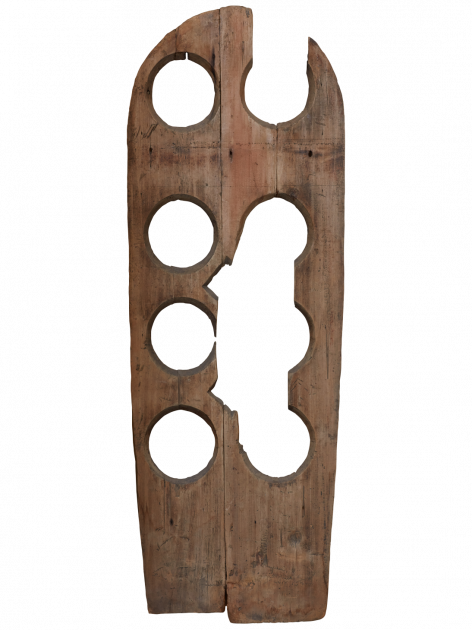Window sash

A window sash or a wooden window frame from the Saviour Church on Nereditsa is a unique piece of Old Russian architecture.
Windows, like all parts of the cathedral, had their sacral meaning. Windows are symbolical eyes of the house, a conductor of light.
Window sashes had the same protective symbolism. The space of the frame was divided to geometric figures that included shapes of a four-ended cross, a circle and a triangle – the most ancient symbols of Christian culture. They were filled with pieces of mica, through which sunlight, a symbol of Divine light, fell into the building.
A window sash or a wooden window frame from the Saviour Church on Nereditsa is a unique piece of Old Russian architecture.
It took one season to build the Saviour Church on Nereditsa (Savior on the Nereditsa hill) in 1198 during the reign of the Novgorodian Duke Yaroslav Vladimirovich in sake of his dead sons. A year after in 1199 its interior was decorated with mural painting that was found during the excavations inside the cathedral in 2001 by Novgorodian architectural-archeological expedition. Outstanding artistic merits, unusual and in many respects unique iconography gained international fame to these architectural monument. By decision of UNESCO in 1992, the Saviour Church on Nereditsa was included in the World Heritage List.
Windows, like all parts of the cathedral, had their sacral meaning. Windows are symbolical eyes of the house, a conductor of light.
Window sashes had the same protective symbolism. The space of the frame was divided to geometric figures that included shapes of a four-ended cross, a circle and a triangle – the most ancient symbols of Christian culture. They were filled with pieces of mica, through which sunlight, a symbol of Divine light, fell into the building.
In ordinary peasant houses of the XII century a window was tightened with an oiled canvas or a fish membrane (an envelope of a fish bubble). Mica is a better and more expensive material, which was mined near Arkhangelsk. Thin transparent pieces of mica were cut to a certain size and fastened together with metal or wooden strips. A put together mica puzzle was strengthened in a wooden frame, which was inserted into the window aperture. Mica is not a colorless mineral that is why it always has different colors: blue, green or pink.
Hence a tradition to apply on separate pieces of mica different tints. West-European Church stained-glass windows also had an influence. Because of their expensiveness colored mica-windows usually were used in religious buildings, tsar’s or boyar’s chambers.
The most ancient mica figures consisted of circles and crosses. In the window sash of the XII century from the Saviour Church on Nereditsa these elements of the ornament are presented. In the evening in the candlelight an intricate pattern on the windows looked especially picturesque.
During the great Patriotic War, in 1941 the church was destroyed. Only about a half of masonry and 15% of the frescoes escaped destruction. Fortunately, the preserved dimensional drawings, made in 1903–1904 by academician of architecture P. P. Pokryshkin, allowed restoring the the Saviour Church on Nereditsa in architectural forms of the late XII century. In 1956–1958 Nereditsa rose from the ruins (architect – G. M. Pillar). In 1986 under the leadership of G. M. Shtender a new restoration project was prepared, which was carried out by the Novgorod Museum in the late 1990s – early 2000s. The complex architectural restoration of the Church of the Transfiguration of Our Saviour on Nereditsa was completed in 2004. The reconstructed church is an exact architectural copy of the ancient church.
